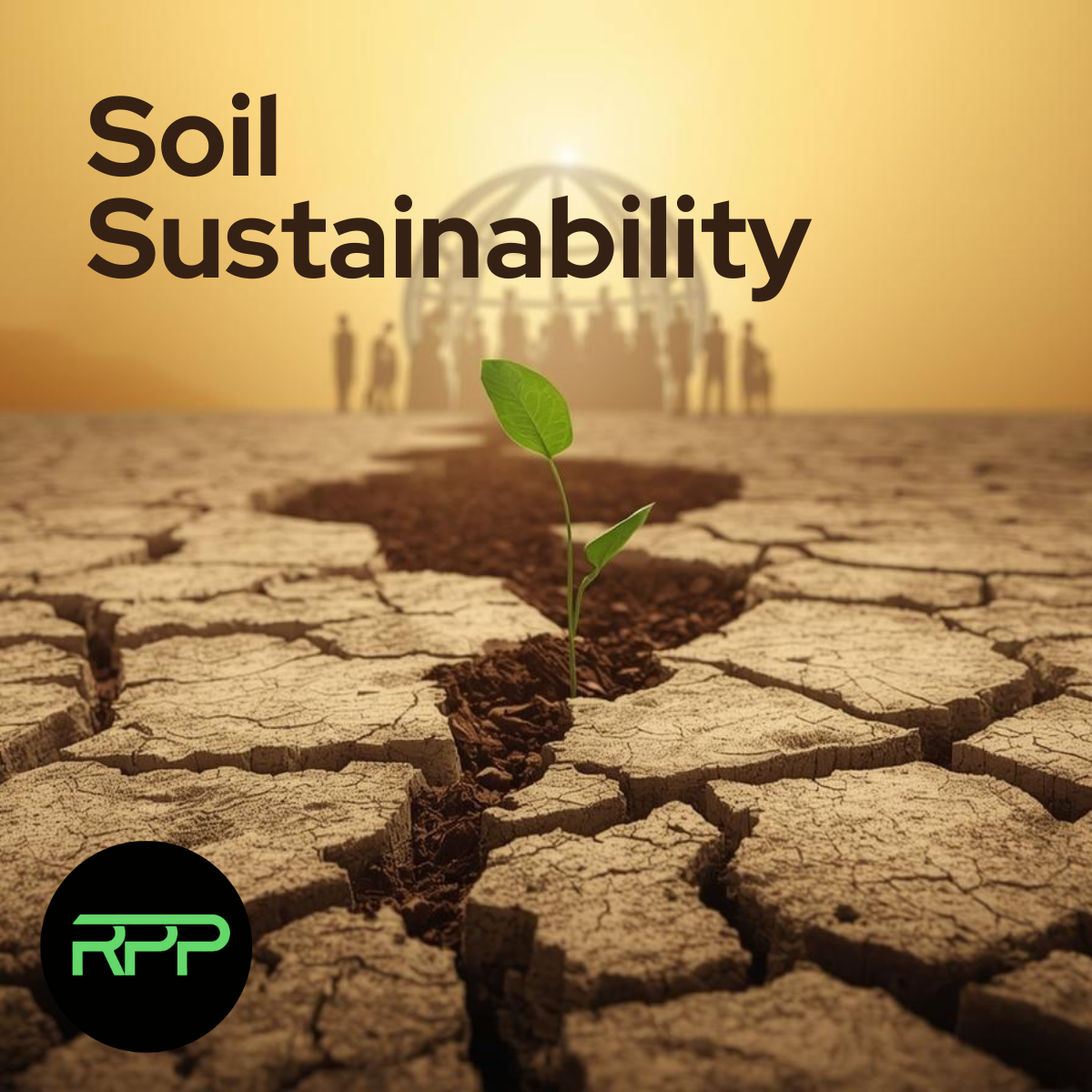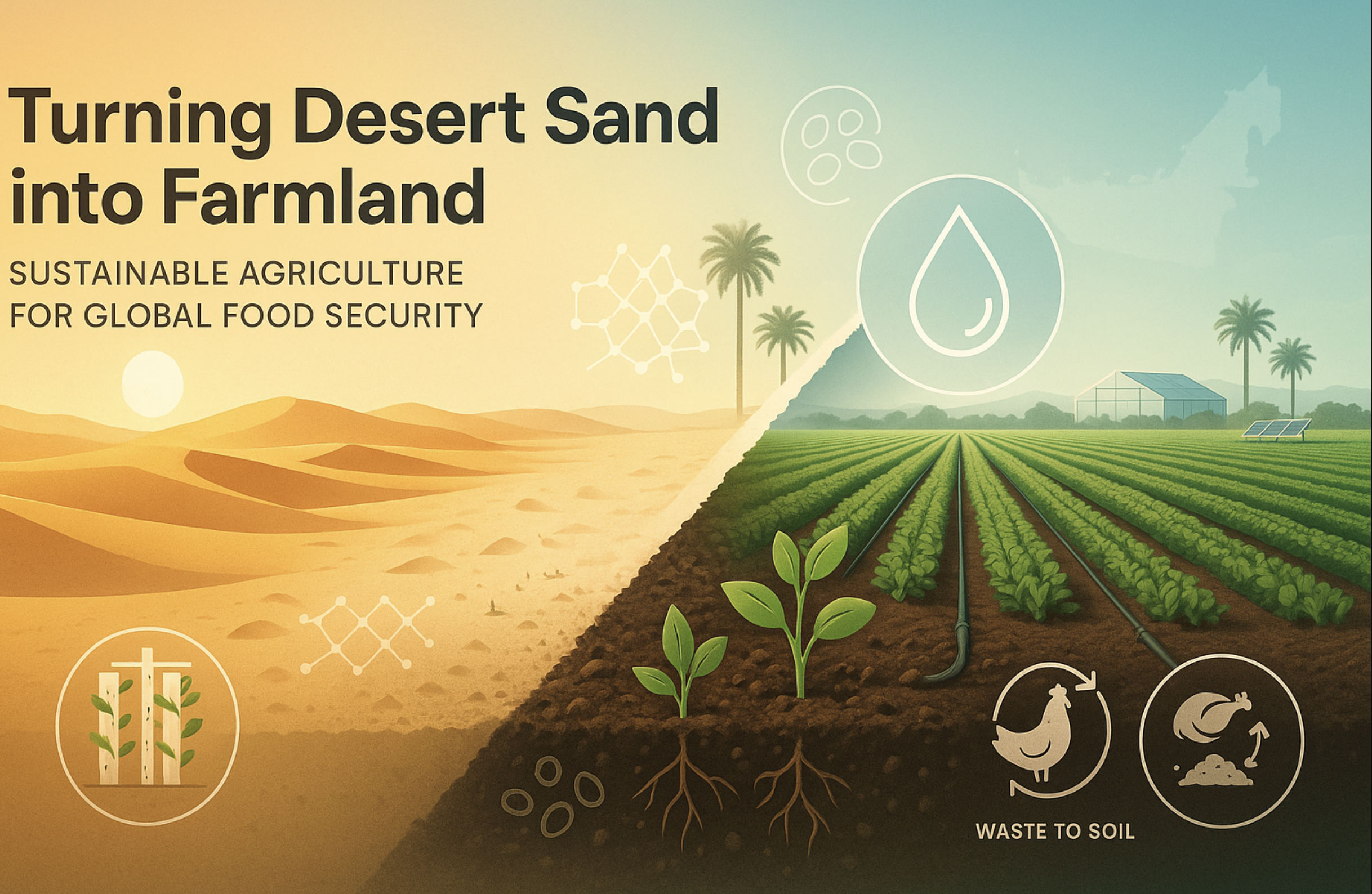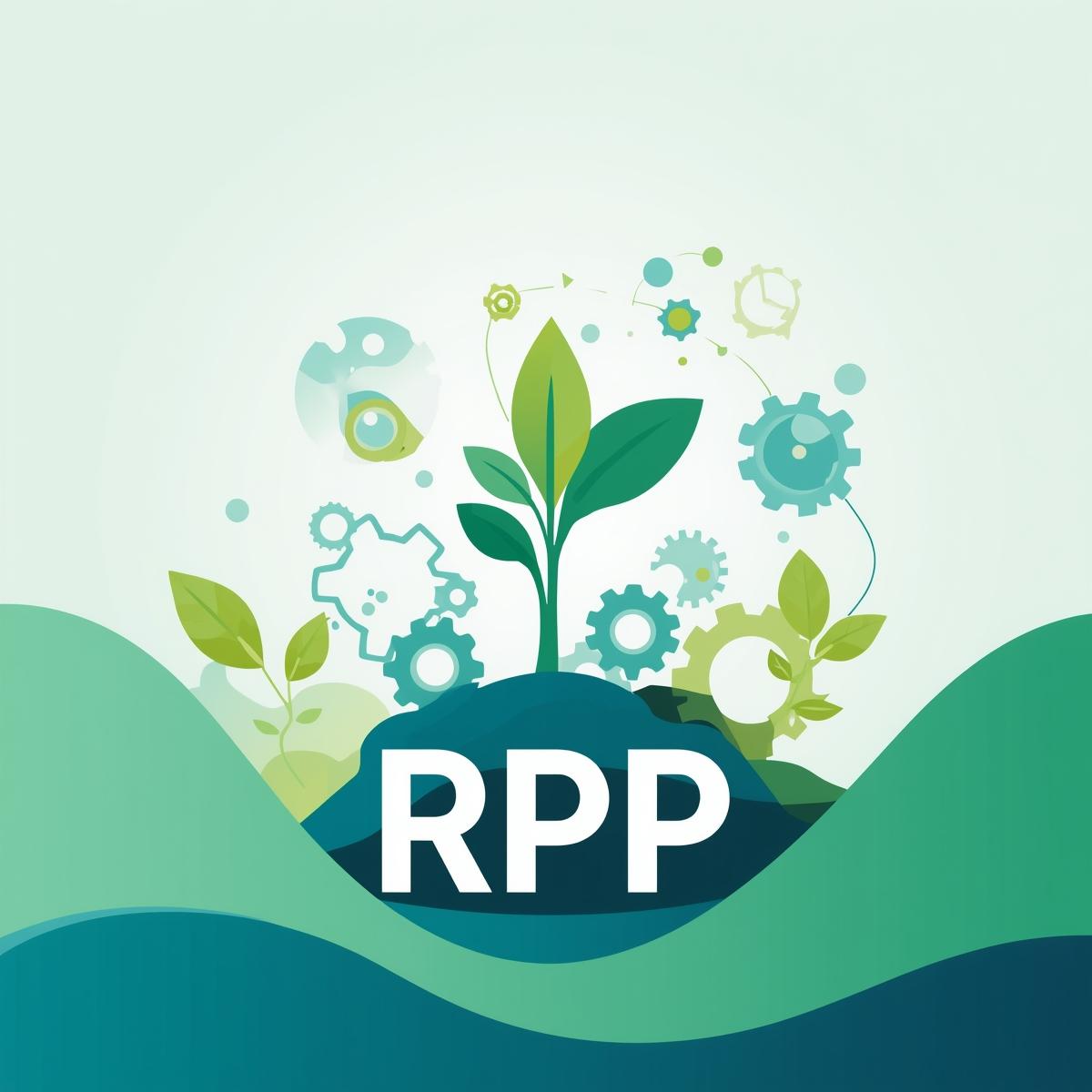Future Food and Soil Sustainability: How Population Growth Will Impact Agriculture and How RPP Solves the Middle East’s Soil Challenges
Future Food and Soil Sustainability: How Population Growth Will Impact Agriculture and How RPP Solves the Middle East’s Soil Challenges
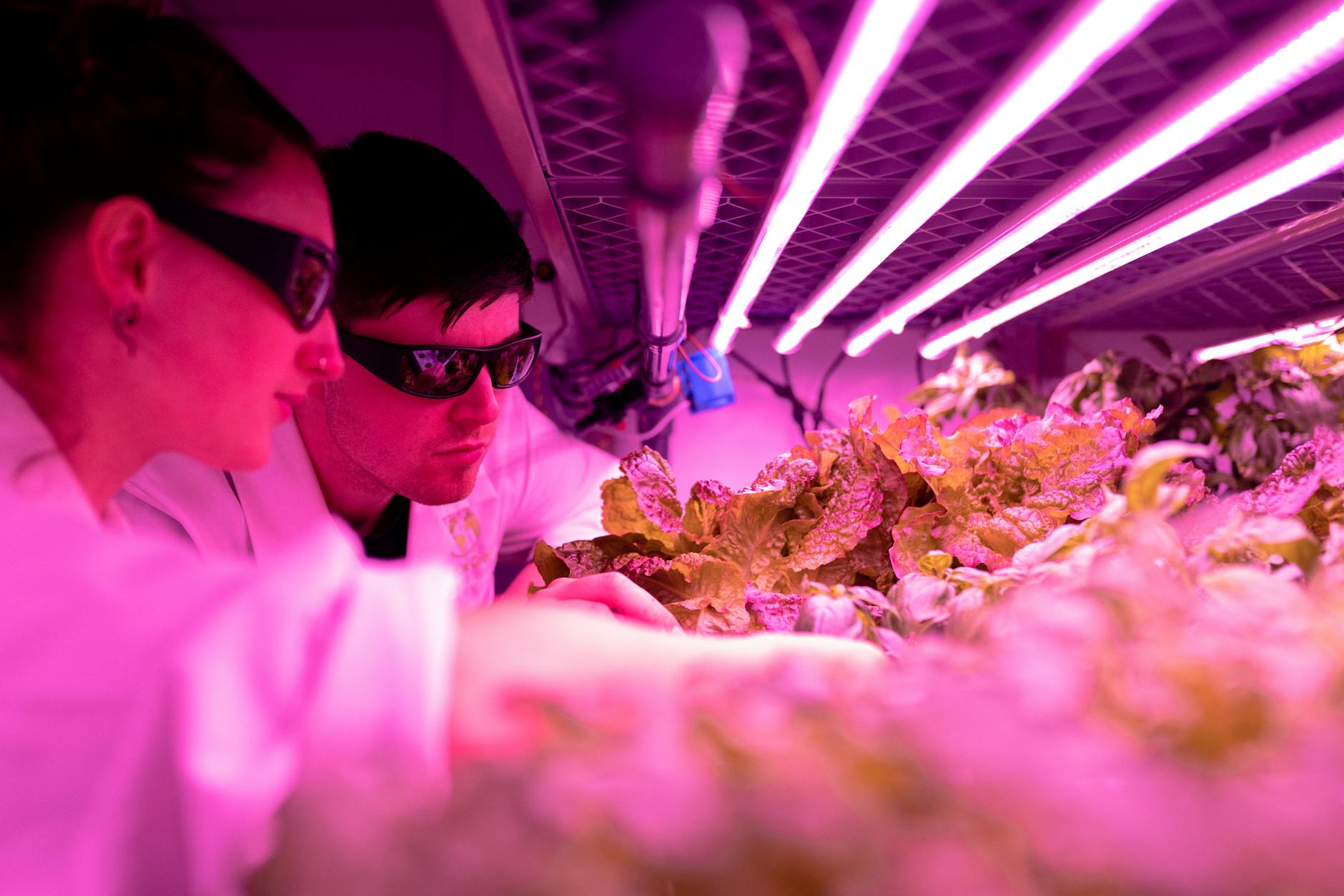
The world population is set to hit nearly 10 billion people by 2050, creating massive pressure on our already strained food systems. For agricultural innovators, policymakers, and future food and soil sustainability professionals, understanding these world population growth projections is critical for planning our food future.
This population boom means we need to boost food production by 70% while dealing with widespread soil degradation crisis that’s already affecting 33% of our farmable land. The challenge gets even tougher in regions like the Middle East, where desert soils struggle with high salt content and poor fertility – problems that traditional farming methods can’t solve affordably.
At RPP, we’re tackling the core issues head-on. Our approach addresses the salt-affected soil restoration challenge in Middle Eastern deserts, where current irrigation actually makes soil health worse by raising salt levels. While existing solutions are too expensive and complicated to scale, our process delivers a long-term, locally driven answer to desert soil rehabilitation for future food and soil sustainability.
We’ll explore how future food security challenges connect directly to population growth timelines, why the soil degradation crisis threatens global food production, and how breakthrough sustainable agriculture solutions can turn problem soils into productive farmland. You’ll see specific examples of agricultural future food and soil sustainability 2050 strategies and learn about soil fertility improvement methods that work in the world’s toughest growing conditions.
Global Population Growth Projections and Timeline

Current population statistics and growth rates by region
The global population reached 8 billion people in 2022, marking a significant milestone in human history. Asia leads population growth with over 4.7 billion people, representing nearly 60% of the world’s total. China and India each house more than 1.4 billion people, though India recently surpassed China as the most populous nation.
Africa shows the fastest growth rates globally, with countries like Nigeria, Ethiopia, and Tanzania experiencing annual increases of 2.5-3%. Sub-Saharan Africa’s population doubles approximately every 30 years. In contrast, European populations are declining or stagnating, with growth rates below 0.5% annually. Japan, South Korea, and several Eastern European countries face negative population growth.
Regional disparities create unique challenges for world population growth projections. While developed nations struggle with aging populations and declining birth rates, developing regions experience youth bulges that strain resources and infrastructure.
Projected population peaks and demographic shifts through 2050
World population growth projections indicate the global population will peak between 10.4-11 billion people by 2080-2100. By 2050, demographers expect approximately 9.7 billion people worldwide, representing a 22% increase from current levels.
Africa’s population will nearly double to 2.5 billion by 2050, with Nigeria potentially becoming the world’s third-largest country by population. Asia will add another 700 million people despite slowing growth rates in China and India. Europe and North America will see minimal increases, primarily through immigration rather than natural population growth.
The demographic shift reveals stark age distribution changes. Africa will have the youngest population globally, with median ages around 20 years in many countries. Conversely, Japan, Italy, and Germany will have median ages exceeding 50 years, creating unprecedented challenges for healthcare systems and economic productivity.
Geographic distribution changes and urbanization trends
Urban populations are expanding rapidly as part of broader world population growth projections. Currently, 56% of people live in cities, but this figure will reach 68% by 2050. Urban growth concentrates in Asia and Africa, where megacities with populations exceeding 10 million are emerging.
Lagos, Nigeria could house 32 million people by 2050, while Dhaka, Bangladesh may reach 28 million. These massive urban centers create intense pressure on land use, water resources, and food distribution systems. Rural-to-urban migration leaves agricultural regions with aging populations and labor shortages.
Climate change accelerates geographic redistribution as rising sea levels, droughts, and extreme weather events displace millions. Small island nations and coastal regions face existential threats, while northern latitudes become more habitable. This climate-induced migration reshapes traditional settlement patterns and agricultural zones.
Impact on resource consumption patterns
Population growth dramatically affects global resource consumption, particularly for food production. Each additional billion people requires roughly 70% more food, assuming current dietary patterns continue. However, rising incomes in developing countries drive increased meat consumption, which demands even more resources per calorie produced.
Water scarcity becomes critical as population centers grow in arid regions. Agriculture consumes 70% of freshwater globally, and this demand intensifies as world population growth projections materialize. Competition between urban water needs and agricultural irrigation creates complex resource allocation challenges.
Land use patterns shift dramatically under population pressure. Agricultural land per person decreases from 0.38 hectares currently to approximately 0.18 hectares by 2050. This compression forces agricultural intensification and expansion into marginal lands, often resulting in soil degradation and reduced fertility. The pressure particularly affects regions with challenging growing conditions, where innovative soil restoration and sustainable farming practices become essential for meeting future food security challenges.
Food Production Challenges in an Expanding World
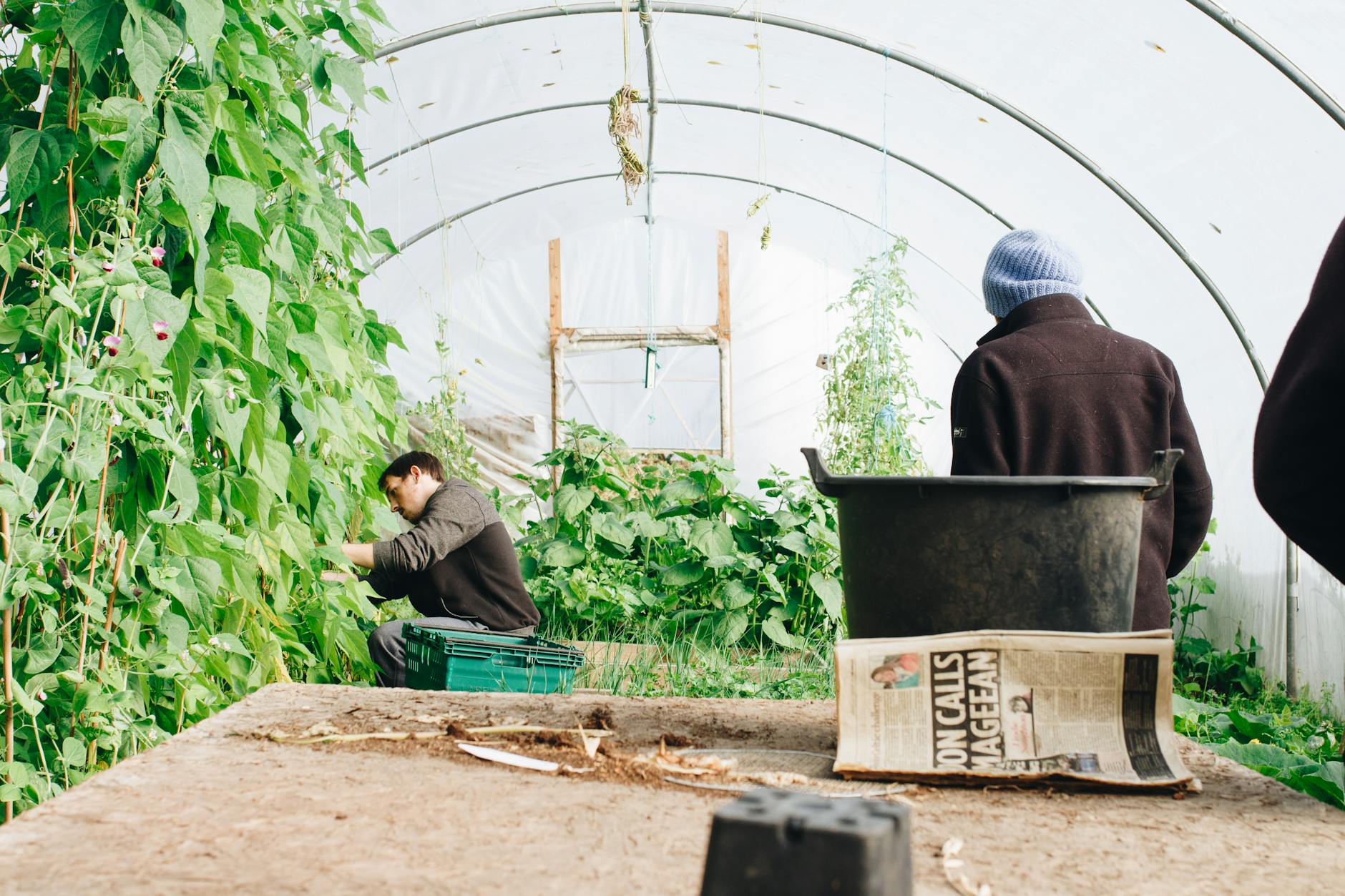
Agricultural land availability versus population demands
The math is pretty stark when you look at future food security challenges. By 2050, we’ll need to feed nearly 10 billion people – that’s about 2 billion more mouths than today. The problem isn’t just the sheer number of people, but where they’re growing. Most population growth is happening in regions that already struggle with food production.
Agricultural land isn’t expanding at the same pace. We’re losing about 24 billion tons of fertile soil annually to erosion, and urban sprawl consumes roughly 2 million hectares of agricultural land each year. What’s left often faces degradation from intensive farming practices that strip nutrients and damage soil structure.
The numbers get even more challenging when you consider that each person needs about 0.5 hectares of agricultural land to maintain a healthy diet. With shrinking per-capita farmland availability – dropping from 0.38 hectares in 1970 to just 0.19 hectares today – the pressure on existing agricultural systems keeps mounting.
Climate change effects on crop yields and farming regions
Weather patterns are shifting in ways that directly impact where and how we grow food. Rising temperatures are pushing traditional farming zones northward, but the soil quality in these new regions often can’t match what farmers are leaving behind. Heat stress reduces crop yields, particularly for staples like wheat and rice that feed billions of people.
Extreme weather events – droughts, floods, and unpredictable rainfall – are becoming more frequent. These disruptions don’t just hurt individual harvests; they make it nearly impossible for farmers to plan long-term. A drought in one season followed by flooding the next can devastate soil health for years.
Some regions are seeing benefits from longer growing seasons, but these gains are often offset by increased pest pressure, disease outbreaks, and soil degradation. The delicate balance between temperature, moisture, and soil health that crops depend on is being disrupted across the globe.
Water scarcity constraints on irrigation and food production
Water stress affects food production more directly than most people realize. Agriculture already consumes about 70% of global freshwater resources, and many key farming regions are pumping groundwater faster than nature can replenish it. The Ogallala Aquifer in the American Great Plains, for example, has dropped significantly, threatening one of the world’s most productive agricultural areas.
Population growth food production pressures mean we need more irrigation precisely when water becomes scarcer. Traditional irrigation methods often worsen soil conditions by increasing salt concentrations – a problem that’s particularly severe in arid and semi-arid regions where much of future agricultural expansion must happen.
Smart water management becomes critical when every drop counts. Drip irrigation and precision agriculture help, but they require significant upfront investments that many farmers can’t afford. Meanwhile, competing demands from growing cities mean less water available for farming.
Nutritional requirements scaling with population growth
Feeding more people isn’t just about producing more calories – it’s about producing the right kinds of food. As incomes rise globally, dietary preferences shift toward more resource-intensive foods like meat and dairy. Producing one kilogram of beef requires about 15,000 liters of water and generates significantly more greenhouse gases than plant-based proteins.
Micronutrient deficiencies already affect over 2 billion people worldwide. Scaling up production of nutrient-dense foods requires diverse cropping systems, but many regions are moving toward monoculture farming for economic reasons. This creates a gap between what people need nutritionally and what agricultural systems actually produce.
The challenge becomes even more complex when you factor in food waste – roughly one-third of all food produced never reaches consumers. Meeting nutritional requirements for a growing population means addressing both production and distribution inefficiencies throughout the food system.
Soil Degradation Crisis Threatening Food Security
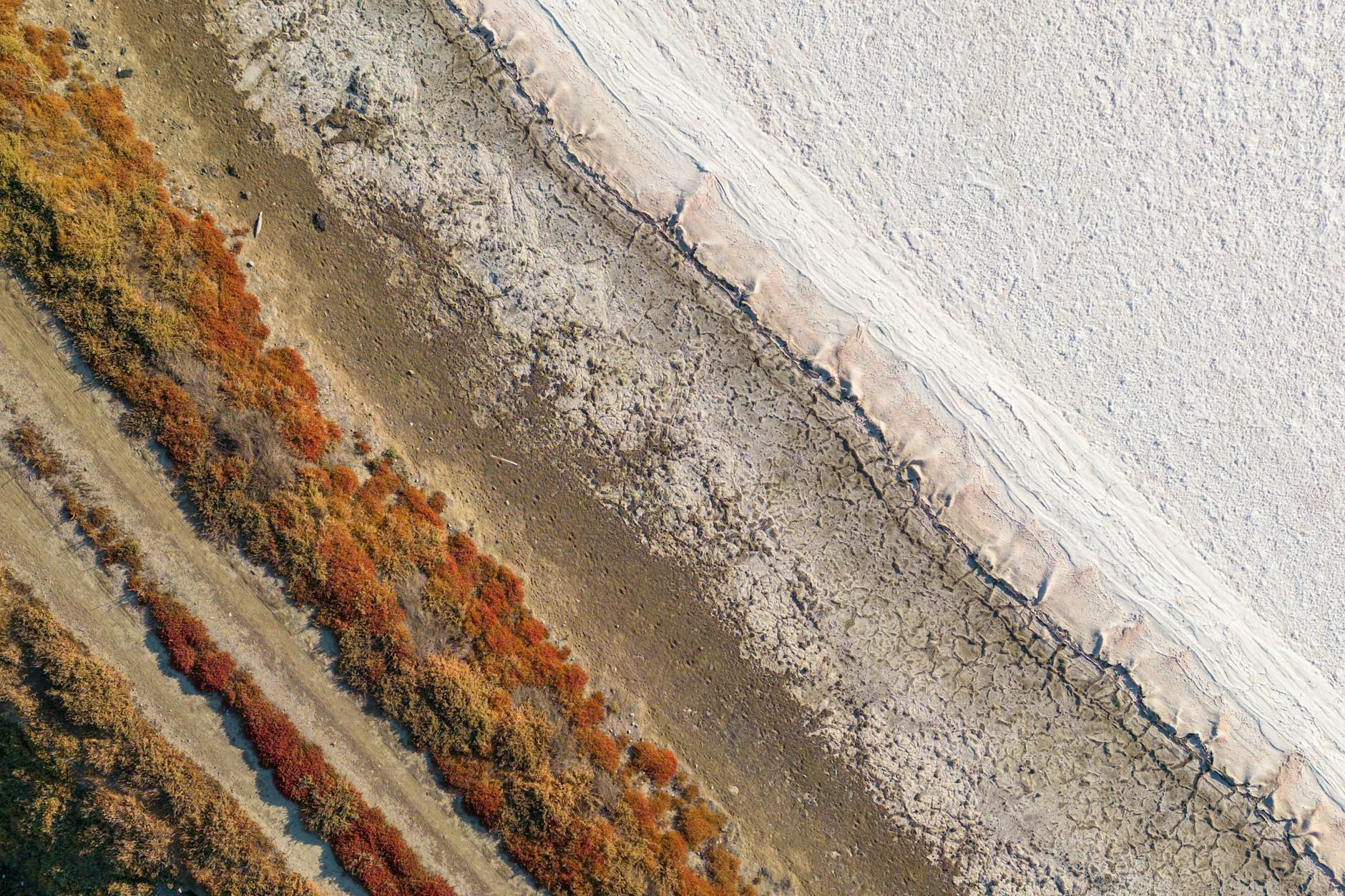
Current Soil Health Decline Rates and Causes Worldwide
The world is losing its fertile soil at an alarming pace. Scientists estimate that we’re losing 24 billion tons of fertile soil annually – that’s equivalent to losing an area the size of South Korea every single year. This crisis directly threatens our ability to feed the growing global population, which is projected to reach nearly 10 billion by 2050.
The primary culprits behind this widespread soil degradation crisis include intensive agricultural practices, deforestation, overgrazing, and climate change. Industrial farming methods strip soils of their natural nutrients and organic matter, while heavy machinery compacts the earth, reducing its ability to absorb water and support plant roots. Wind and water erosion accelerate when protective vegetation is removed, carrying away the topsoil that took centuries to form.
Agricultural regions across the globe are experiencing dramatic declines in soil quality. The Great Plains of North America, once considered the world’s breadbasket, has lost nearly half of its topsoil over the past 150 years. Similar patterns emerge in China’s loess plateau, India’s farmlands, and sub-Saharan Africa, where soil fertility improvement has become critical for food security.
Salt Accumulation from Intensive Irrigation Practices
Modern irrigation systems, while boosting crop yields, have created an unexpected enemy: salt buildup in agricultural soils. When farmers apply water to their fields, dissolved salts naturally present in irrigation water remain in the soil after the water evaporates or is absorbed by plants. Over time, these salts accumulate to levels that become toxic to most crops.
This process, known as salinization, affects over 800 million hectares of agricultural land worldwide. Countries in arid and semi-arid regions face the most severe challenges, as their irrigation water often contains higher salt concentrations and evaporation rates are extreme. Australia has lost millions of hectares to salt-affected soil restoration needs, while California’s Central Valley battles rising salt levels that threaten its massive agricultural output.
The economic impact is staggering. Farmers watch their crop yields decline year after year as salt levels increase. Many are forced to abandon their fields entirely when the soil becomes too saline to support any meaningful agriculture. This creates a vicious cycle where productive farmland shrinks just as demand for food production increases with population growth.
Desert Expansion Reducing Arable Land Availability
Desertification represents one of the most visible forms of land degradation affecting food security worldwide. Every year, deserts expand by approximately 12 million hectares – an area roughly the size of North Korea becomes unusable for agriculture. This expansion isn’t just about sand dunes advancing; it’s about once-productive land becoming too degraded to support crops or livestock.
The Sahara Desert has grown by 10% since 1920, swallowing agricultural communities and forcing millions to migrate. Similar patterns emerge across Central Asia, where the Gobi Desert continues expanding, and in parts of the American Southwest, where desert soil rehabilitation has become essential for maintaining agricultural viability.
Climate change accelerates this process through extended droughts, higher temperatures, and shifting precipitation patterns. When rainfall becomes erratic, farmers struggle to maintain soil moisture levels, and vegetation dies back, leaving bare soil exposed to wind erosion. The protective layer of plants that once held soil in place disappears, creating conditions ripe for desert expansion.
Middle Eastern desert farming faces particularly severe challenges, as traditional agricultural lands battle both natural desert encroachment and human-induced degradation. Countries like Jordan, Syria, and parts of Saudi Arabia have seen significant portions of their limited arable land transform into barren, unusable terrain.
Chemical Fertilizer Dependency Creating Long-term Soil Damage
The green revolution promised to solve world hunger through chemical fertilizers, but decades of heavy use have revealed serious unintended consequences. While these fertilizers initially boosted crop yields dramatically, they’ve created a dependency that’s slowly poisoning the very foundation of agriculture: healthy soil ecosystems.
Chemical fertilizers work by providing plants with immediate access to nitrogen, phosphorus, and potassium. However, they don’t feed the complex web of microorganisms, fungi, and bacteria that make soil truly fertile. Over time, this biological community dies off, leaving behind sterile dirt that requires ever-increasing amounts of chemical inputs to produce the same yields.
The numbers tell a troubling story. Farmers today use three times more fertilizer per hectare than they did in 1960, yet crop yield increases have plateaued in many regions. Soil organic matter – the key indicator of soil health – has declined by 50% or more in many agricultural areas. This creates a dangerous cycle where farmers must apply more chemicals each season to maintain production levels.
Water pollution from fertilizer runoff has created massive dead zones in oceans and contaminated drinking water supplies for millions of people. The Mississippi River carries so much agricultural runoff that it’s created a dead zone in the Gulf of Mexico larger than the state of Connecticut. These environmental costs compound the soil degradation crisis, making sustainable agriculture solutions more urgent than ever for future food security challenges.
Middle Eastern Agricultural Challenges and Opportunities – Future Food and Soil Sustainability
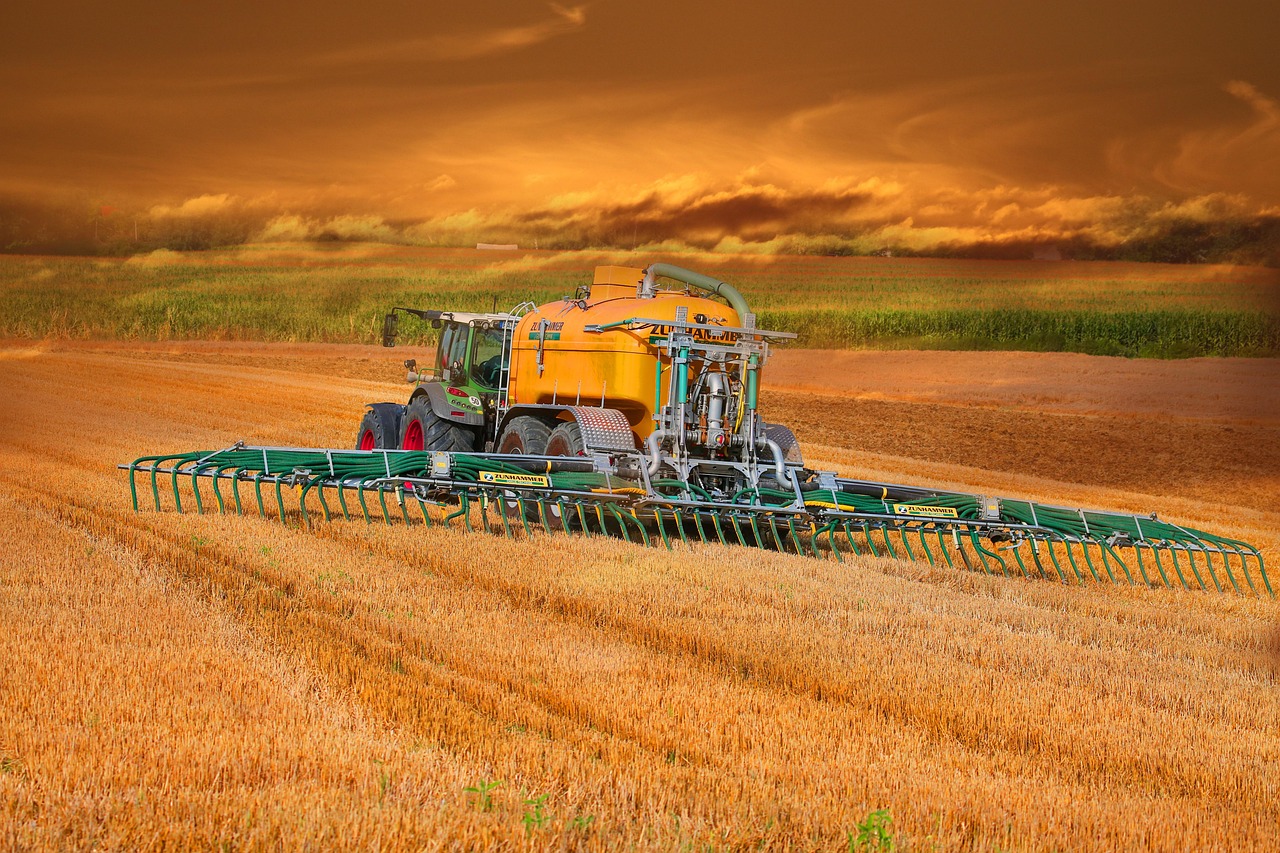
High Salt Content in Desert Soils Limiting Crop Production
The Middle East’s vast desert landscapes present unique agricultural challenges that directly impact the region’s ability to feed its growing population. Desert soils across countries like Saudi Arabia, UAE, and Qatar contain naturally high concentrations of salt, creating hostile environments for most traditional crops. These salt-affected soil conditions, known as saline soils, contain sodium chloride levels that can reach 4-8 decisiemens per meter, far exceeding the tolerance thresholds of major food crops like wheat, rice, and vegetables.
When plants try to grow in these conditions, the high salt concentration prevents them from absorbing water effectively, even when moisture is present. This osmotic stress leads to stunted growth, reduced yields, and often complete crop failure. The problem becomes even more complex when you consider that these same regions are experiencing rapid population growth, creating an urgent need for increased food production capacity.
Irrigation-Induced Salinization Worsening Soil Conditions
Current irrigation practices across Middle Eastern desert farming operations are inadvertently making the salt problem worse. When farmers apply irrigation water to their fields, they’re often using groundwater or treated wastewater that contains dissolved salts. As this water evaporates under the intense desert sun, it leaves behind salt deposits that accumulate in the soil over time.
This process, called secondary salinization, creates a vicious cycle where each irrigation event adds more salt to already compromised soils. Agricultural regions that started with moderately saline conditions can become completely unusable for farming within just a few years. The situation becomes particularly challenging because traditional farming methods rely heavily on regular watering, making it nearly impossible to avoid this salt buildup.
Studies from the region show that irrigated agricultural areas lose approximately 1-2% of their productive capacity annually due to this salinization process, creating long-term threats to food security and agricultural future food and soil sustainability.
Regional Food Import Dependency and Security Concerns – Future Food and Soil Sustainability
The combination of challenging soil conditions and limited arable land has created a heavy reliance on food imports across Middle Eastern nations. Countries like Saudi Arabia import over 80% of their food supply, while the UAE imports nearly 90% of its consumable goods. This dependency creates significant vulnerabilities, especially as world population growth projections suggest increased global competition for food resources.
Regional governments recognize these food security challenges as national security issues. Supply chain disruptions, whether from global conflicts, climate events, or trade disputes, can quickly impact food availability and affordability. The COVID-19 pandemic highlighted these vulnerabilities when several countries experienced temporary shortages of staple foods due to disrupted international supply chains.
Local food production capacity becomes even more critical when considering that the region’s population is expected to grow by 35-40% over the next three decades, while global food demand is projected to increase by 50% by 2050.
Economic Pressures from Costly Traditional Soil Remediation
Conventional approaches to soil restoration in desert environments come with hefty price tags that make them impractical for widespread agricultural development. Traditional methods like soil replacement, chemical treatments, and extensive drainage systems can cost $15,000-25,000 per hectare, putting them out of reach for most farming operations.
These expensive solutions also require ongoing maintenance and repeated treatments, creating unsustainable economic models for long-term agricultural development. Many existing soil remediation techniques depend on imported materials and specialized equipment, adding logistical complexity and additional costs to already challenging projects.
The scalability issue becomes apparent when considering the vast areas that need treatment. With millions of hectares of potentially productive land sitting unused due to soil salinity, traditional remediation costs would require investments in the hundreds of billions of dollars – resources that exceed the agricultural budgets of most regional governments and private investors.
Revolutionary Soil Restoration Solutions for Sustainable Agriculture
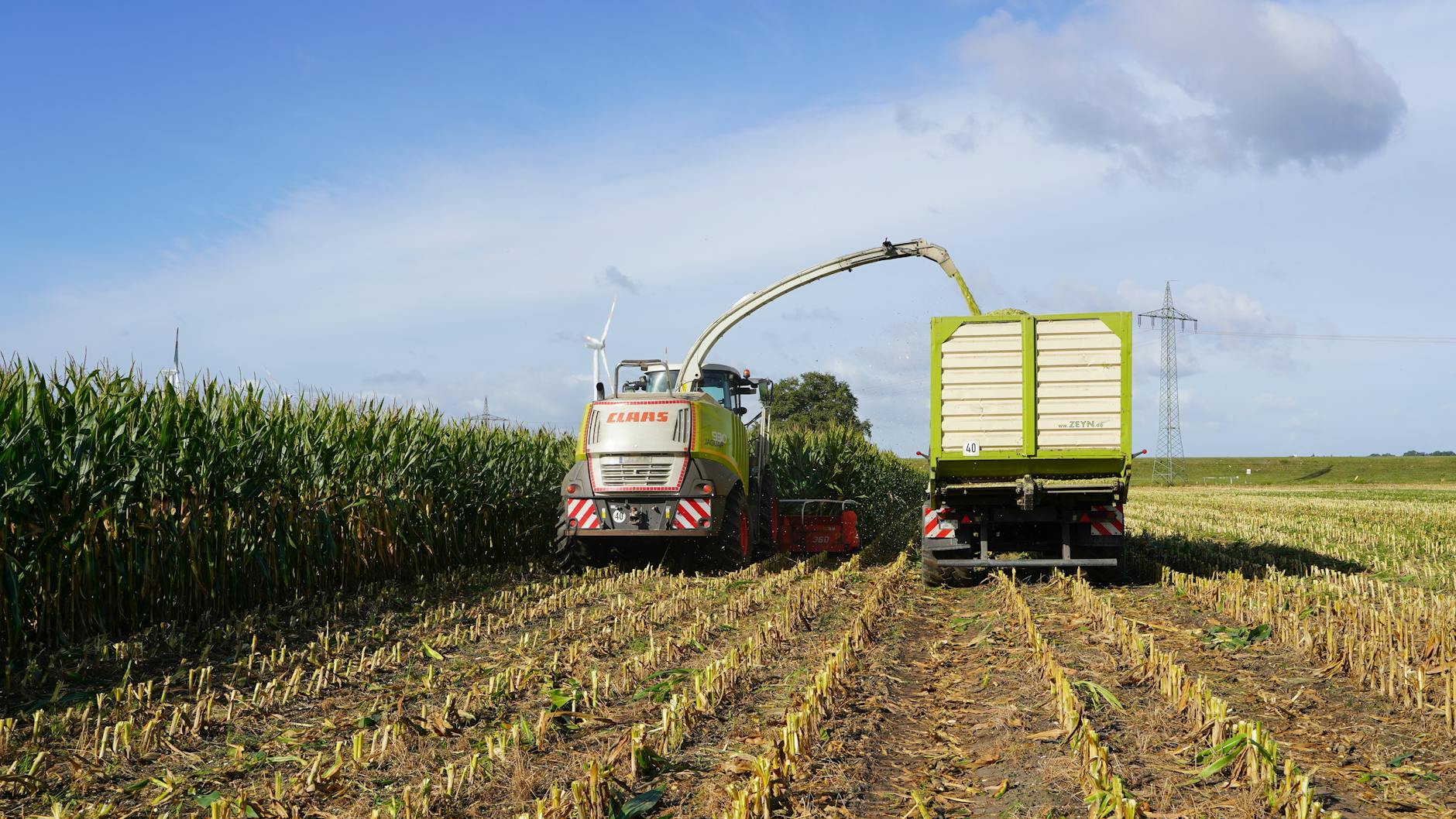
Advanced sand and soil treatment technologies for desert regions
Middle Eastern deserts present unique agricultural challenges that require innovative approaches to soil restoration. The high salt content and low fertility of desert sands create a hostile environment for crop production, but cutting-edge soil treatment technologies are changing this reality. Advanced soil amendment processes now combine specialized materials with targeted nutrient delivery systems to transform barren landscapes into productive agricultural zones.
Modern desert soil rehabilitation techniques focus on creating optimal growing conditions by addressing the fundamental chemistry of sandy substrates. These technologies incorporate organic matter enhancement, mineral supplementation, and pH balancing to establish sustainable growing mediums. The process begins with comprehensive soil analysis to identify specific deficiencies and salt concentrations, followed by customized treatment protocols that restore natural biological activity.
Recent breakthroughs in soil engineering have made it possible to create fertile growing environments in previously unusable desert areas. These systems work by establishing microbial communities that support plant growth while maintaining soil structure over time. The technology proves particularly effective in regions where traditional farming methods have failed due to extreme environmental conditions.
Salt removal processes that restore natural soil fertility
Salt accumulation in agricultural soils represents one of the most significant threats to sustainable agriculture solutions in arid regions. Current irrigation practices often exacerbate this problem by introducing additional salts while failing to provide adequate drainage. Revolutionary salt extraction methods now offer hope for restoring natural soil fertility without relying on expensive desalination or soil replacement strategies.
These innovative processes target salt crystals at the molecular level, breaking down accumulated deposits and facilitating their removal through enhanced drainage systems. The technology works by creating conditions that allow natural leaching processes to occur more effectively, reducing salt concentrations to levels that support healthy plant growth.
The restoration process involves several stages of treatment that gradually reduce salt content while rebuilding soil structure. Initial treatments focus on breaking up salt-hardened soil layers, followed by targeted extraction processes that remove excess sodium and chloride compounds. The final phase introduces beneficial microorganisms and organic matter to reestablish natural soil fertility cycles.
Scalable implementation strategies for widespread adoption
Traditional soil restoration approaches often fail because they’re too costly and complex for widespread implementation. Successful scalability requires solutions that can be adapted to different regional conditions while maintaining cost-effectiveness across various project sizes. The key lies in developing modular systems that communities can implement gradually without massive upfront investments.
Effective scaling strategies begin with pilot programs that demonstrate clear results in local conditions. These initial projects serve as proof-of-concept demonstrations while training local personnel in implementation techniques. The approach allows for refinement of methods based on specific regional challenges before expanding to larger areas.
| Implementation Phase | Duration | Coverage Area | Resource Requirements |
|---|---|---|---|
| Pilot Testing | 6-12 months | 10-50 hectares | Minimal equipment, local training |
| Community Expansion | 1-2 years | 100-500 hectares | Mobile treatment units, trained operators |
| Regional Deployment | 3-5 years | 1000+ hectares | Permanent facilities, supply chains |
The modular approach enables communities to start small and expand their programs based on available resources and demonstrated success. This strategy reduces financial risk while building local expertise and confidence in the technology.
Locally-driven future food and soil sustainability models ensuring long-term success
Long-term success in desert soil rehabilitation depends on creating self-sustaining systems that communities can maintain independently. Locally-driven future food and soil sustainability models focus on building indigenous capacity while establishing economic incentives that support continued program operation. These models recognize that external interventions often fail without strong local ownership and ongoing community engagement.
Sustainable programs begin by training local residents in all aspects of soil treatment and maintenance. This training covers technical skills, equipment operation, and basic troubleshooting to ensure communities can manage their systems without constant outside assistance. Local ownership creates pride in the program while building the expertise needed for long-term success.
Economic future food and soil sustainability requires creating revenue streams that support ongoing operations while providing benefits to participating communities. Many successful programs establish cooperative structures where farmers share costs and benefits, creating collective ownership of soil improvement initiatives. These cooperatives often develop into local enterprises that provide soil treatment services to neighboring areas.
The most effective future food and soil sustainability models also incorporate traditional knowledge and farming practices with modern soil restoration techniques. This integration respects local culture while enhancing the effectiveness of treatment programs. Communities that see their traditional knowledge valued alongside new technologies show greater commitment to program success and long-term maintenance.
Environmental monitoring systems track progress over time, demonstrating the value of continued investment in soil health. These systems provide data that communities can use to optimize their practices while showing tangible improvements in agricultural productivity and environmental conditions.

نتیجہ
World population growth will bring unprecedented challenges to our food systems and agricultural lands over the coming decades. As we face mounting pressure to feed more people with less fertile soil, the degradation of our agricultural resources has reached a critical point. The Middle East exemplifies these global struggles, where salty desert soils and water scarcity create the perfect storm for food insecurity.
The solution lies in innovative approaches that tackle these problems at their source. RPP’s revolutionary soil restoration process addresses the core issues plaguing agricultural future food and soil sustainability – from transforming salt-heavy desert soils into fertile growing mediums to creating scalable, cost-effective solutions that communities can implement locally. Rather than accepting soil degradation as inevitable, we can actively restore and enhance our agricultural lands to meet tomorrow’s food demands while building resilient farming systems that last for generations.

